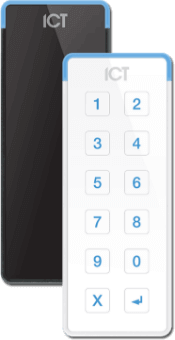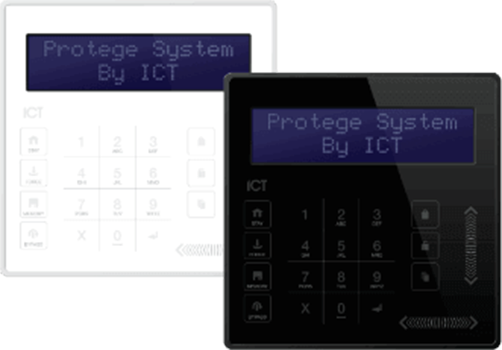Video MGMT System
 Access Control
Access Control
Voice & Data Wiring
 Burglar Alarm
Burglar Alarm
 Fire Alarm
Fire Alarm
Video MGMT System
Voice & Data Wiring
Too busy to read? Here’s a summary:
From the wooden locks of ancient civilizations to the sophisticated biometric and IoT-integrated systems of today, access control effectiveness has come a long way over the centuries. In fact, the history of access control is as old as the history of human civilization.
Today, let’s journey through the ages to understand the evolution of the systems we use to secure our assets and keep people safe.
Access control can be traced back to ancient civilizations. The Egyptians developed a mechanism that involved a key, a wooden pin, and a bolt that fit into a door fixture for locking. The pins obstructed the bolt, preventing access unless a correct key was used to lift the pins and open the bolt or latch.
Roman locks were similar but made of sturdier materials than wood, such as iron or bronze.
While these ancient pin locks provided a basic level of security, they were relatively easy to pick or force open.
Fast forward to the 18th and 19th centuries, and we get the invention of the lever tumbler lock and the pin tumbler lock by Robert Barron and Linus Yale, respectively.
A tumbler lock features movable elements, known as tumblers, that prevent the lock from opening unless a valid key is inserted.
While “access control” can refer to any system designed to restrict access, including mechanical locks, electronic locks, and even moats around castles, the term most commonly refers to modern electronic access control systems used for automated entry management and data protection.
The 20th century saw the introduction of combination locks, which marked the transition from mechanical to electronic access control.
Combination locks require the input of a specific sequence of numbers or symbols before granting access.
While purely mechanical combination locks have been around since 1936, most combination locks today are at least partly electronic.
Combination locks were soon followed by magnetic strip cards, through which access could be gained by swiping the card’s magnetic strip against a reader.
RFID, which stands for Radio-Frequency Identification, is a technology that uses electromagnetic fields to automatically identify and read tags containing electronically stored information.
When an RFID card is brought close to a reader, the reader emits radio waves.
The card's antenna receives these waves and returns the information stored on the card's microchip to the reader.
The reader then sends this data to the access control system, which checks the credentials. If the card is authorized, the system grants access by unlocking a door or barrier.
Near-field communication (NFC) is a subset of RFID technology designed for short-range communication, meaning that an NFC tag must usually be within a few centimeters of a credential reader to begin an access attempt.
NFC technology was introduced in the early 2000s by Philips and Sony, and its application for entry management became prominent in the late 2000s and 2010s.
The system consists of an NFC-enabled reader and an NFC tag, which can be attached to cards and wearable devices, as well as smartphones. The reader detects the tag, and data exchange occurs through electromagnetic induction.
NFC's short range provides added resistance to cloning devices to minimize the risk of unauthorized interception.
Thanks to the proliferation of smartphones equipped with Bluetooth signal technology, Bluetooth-based access control systems began gaining traction in the 2010s.
As a user approaches a Bluetooth door reader, their smartphone communicates with the reader by transmitting Bluetooth signals.
This process offers a hands-free, seamless access experience that can be especially beneficial at heavy-traffic entrances and in environments like parking garages, where other credential systems can result in slowdowns and long lines.
The late 20th and early 21st centuries saw the rise of biometric access control systems, which identify individuals by assessing unique biological traits.
Because biological identifiers on fingerprints, faces, and eyes are significantly more difficult to replicate or forge than other credentials, they provide a heightened level of security.
The rise of the Internet of Things (IoT) in the late 20th century brought about a new era in access control by enabling communication and data exchange between devices over the Internet.
IoT-connected devices range from everyday household items like refrigerators and thermostats to industrial machinery.
Here's how IoT and access control intersect:
Smart Access: IoT enables devices like smart locks and security cameras to be controlled remotely from anywhere with Internet access.
For example, when delivery people arrive at a property after hours, they can be seen through security cameras, and doors can be unlocked via an IoT-connected app or browser.
Integrated Security: On the vast network of IoT, seemingly separate security devices can communicate with each other.
For example, if a security camera detects an intruder, it can communicate with a connected alarm system to trigger an alert or with a connected lighting system to turn on the lights.
Data Analytics: IoT devices collect vast amounts of data. In the context of access control, this data can provide insights into entry and exit patterns, allowing for predictive analytics and improved site management.
Scalability: As businesses grow, IoT allows for the easy integration of new devices into existing access control ecosystems. Significant system overhauls are rarely necessary.
Mammoth Security has the experience and knowledge to help you select, install, and program the perfect access control solution for your business or organization. For a free site assessment, fill out the form below.
NOT COMPLETELY SURE?
860-748-4292The lever tumbler lock and the pin tumbler lock were invented by Robert Barron and Linus Yale, respectively.
They marked the transition from mechanical to electronic access control in the 20th century.
RFID stands for Radio-Frequency Identification, which uses electromagnetic fields to identify and read tags with stored information.
NFC is a subset of RFID designed for short-range communication, often within a few centimeters.
With the rise of smartphones, Bluetooth access control offers hands-free and seamless access, which is especially beneficial in high-traffic areas.
Biometric systems identify individuals by unique biological traits, such as fingerprints, facial features, and iris patterns.
IoT has ushered in the age of smart security, allowing devices to communicate, be controlled remotely, and integrate seamlessly with other systems.
Biological identifiers are challenging to replicate or forge, offering a heightened level of security.
Their electromagnetic fields allow for quick, contactless access verification, with NFC providing added resistance to unauthorized interception.
While mechanical combination locks have existed since 1936, modern needs for enhanced security and technology integration have made electronic versions more prevalent.
IoT devices collect vast amounts of data, providing insights into entry and exit patterns for improved site management.
On the IoT network, separate security devices can communicate with each other, enhancing alert and response systems.
Ancient locks were relatively easy to pick or force open, which led to the invention of more sophisticated systems over time.
Bluetooth allows hands-free access, which is particularly beneficial in environments like parking garages to prevent long queues and delays.